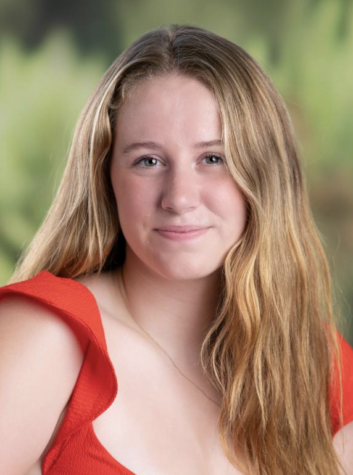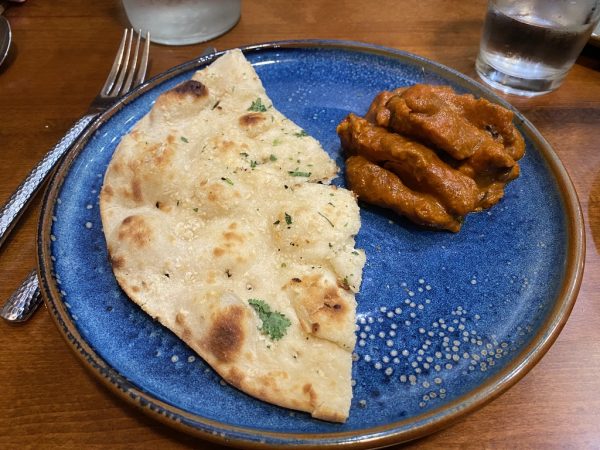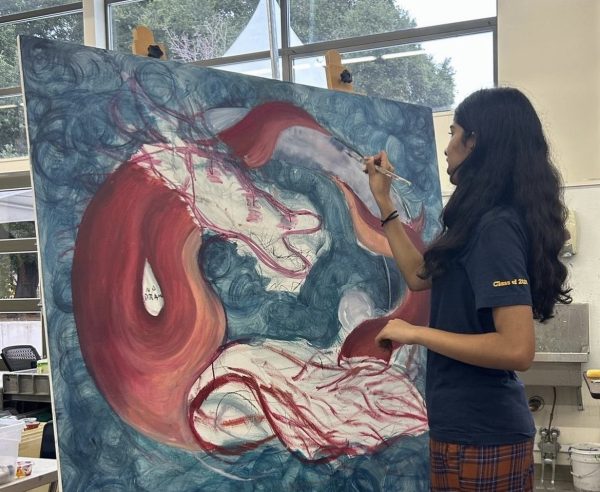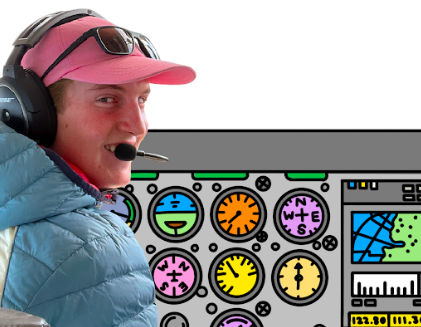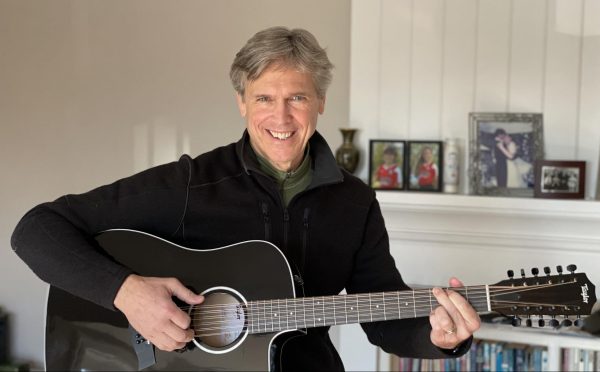Menlo Students and Teachers Readjust to Hybrid Learning
Students both in-person and on Zoom in Spanish teacher Janet Tennyson’s class play Kahoot to practice their vocabulary. Staff photo: Annie Stent.
March 3, 2021
From Tuesday, Jan. 19 until the start of mid-winter break on Friday, Feb. 12, Menlo returned for its second round of hybrid learning. During this four-week period, 50% of the student body remained at home each week while 50% attended classes on campus. The first group to be on campus was labeled as the Gold cohort and the second group on campus was labeled as the Blue cohort. After mid-winter break, the school has scheduled a two-week quarantine to help ensure the safety of the community. Students, teachers and staff have been adjusting to the new learning conditions and safety precautions during hybrid learning.
While the hybrid model has mostly run smoothly, there have also been some challenges.
English teacher Lena Presessky has been teaching from home during hybrid learning due to family medical concerns. Teaching on-campus students from home has had its share of challenges for Pressesky. She feels that it was chaotic at first because some students were on Zoom on their laptops and some were using the in-class monitor, making it more difficult for Presseky to connect with her students. “It taught me pretty quickly that I needed to streamline and clarify the way that I want to do things,” Pressesky said.
Unlike Pressesky, math teacher Sujata Ganpule has been teaching in person during hybrid learning. Ganpule is still adjusting to the hybrid model. “[I’m] tending to the kids in class and the kids on Zoom [while] wearing the mask and making sure people are six feet apart. […] It feels like a lot more to do than a normal class [before COVID-19],” she said.
Ganpule has also noticed the difference between interacting with her in-person students and her students on Zoom. She has found it easier to teach and connect with her in-person students without the Zoom barrier.
Both Pressesky and Ganpule feel that their students are benefiting from the hybrid program. Pressesky enjoys how much more social interaction her students are getting, and Ganpule sees in-person learning as a much better experience for students academically. “It’s so much easier [for my students] to ask questions,” Ganpule said.
However, just like their teachers, students still have some difficulties adjusting to in-person learning along with the positives of the hybrid model. Menlo sophomores Ginger Quigley and Avery Romain both completed two weeks in person during the most recent round of hybrid learning. Quigley is in the Blue cohort, and Romain is in the Gold cohort.
Both Quigley and Romain feel that in-person classes are more effective. “It’s harder to participate online because it’s more awkward since it feels like less of a conversation,” Quigley said.
During her time on campus, Quigley realized how stark the Zoom barrier can be. She noticed how hard it is to do activities with students online and in-person. For Quigley, the activities where the two come together can feel strained, but when they do activities separately, it feels like two entirely separate classes. “It’s just all really complicated,” she said.
Similar to Ganpule, Quigley and Romain have also experienced the adjustment it takes to go from online to in-person classes. The biggest difference Quigley noticed was the lack of downtime in person compared to at home. The week on-week off model, where students alternate between in-person and online learning, make this adjustment harder. “It feels like right when we get used to [in-person classes], we go back to online,” Quigley said.
Romain felt the same way. However, he noticed that hybrid learning impacted his sleep schedule more than it impacted his overall free time. “It would be better if each group went for two weeks. […] I have to get up a lot earlier for in-person than remote, and it’s hard to get used to,” he said.
From a safety standpoint, hybrid is doing very well, according to Health Services Coordinator Joan Barada and Dean of Students Tony Lapolla.
As a safety precaution, students and staff are required to wear contact tracing tags, called POM tags, when they are on campus. “People have respected the check-in process with One Medical and [using] the POM tags,” Lapolla said.
Lapolla was surprised at how well the POM tracing has gone. He expected that it would be more difficult for students to remember to bring them and that Menlo would be sending more people home because of their failure to bring their POM tag to campus.
The only concern that Lapolla has for hybrid surrounds social distancing practices. He noticed that students struggle with social distancing during lunchtime. In an attempt to combat this concern, the school administration has added chairs to the quad, spaced six feet apart, that students are required to sit in during lunchtime.
All of these safety protocols have proven to be effective, and the POM tags have made a positive impact in preventing COVID-19 outbreaks within the Menlo community. According to Director of Academic Innovation Maren Jinnett, there was a positive case detected toward the end of hybrid, but because of Menlo’s contact tracing through the POM tags, they were able to quickly take action and prevent any further spread.
Despite some tweaks along the way, hybrid learning has been safe and positive for the community overall, according to Lapolla. “It’s great having more people on campus, both students interacting with their peers and their teachers. […] Just having that interaction has been a plus,” he said.



